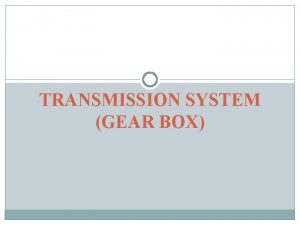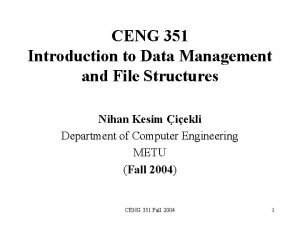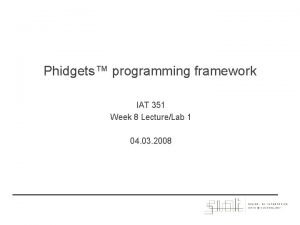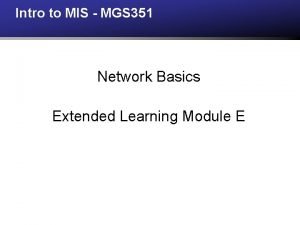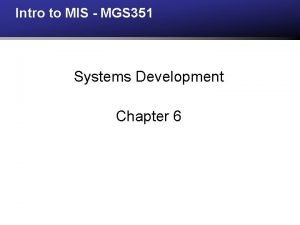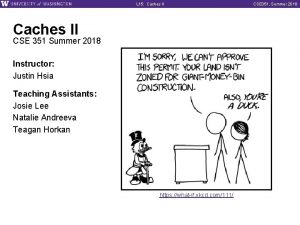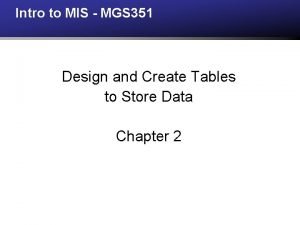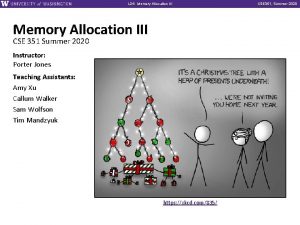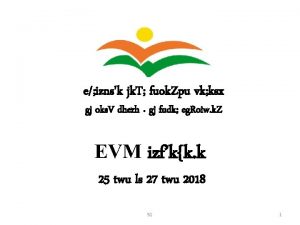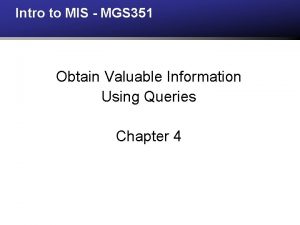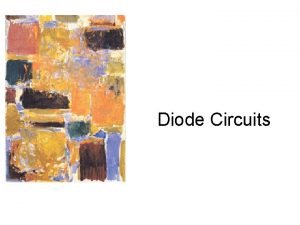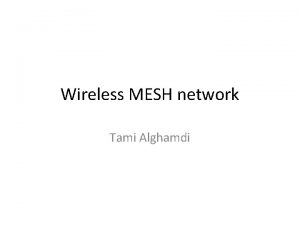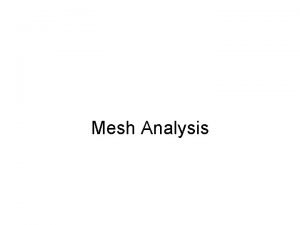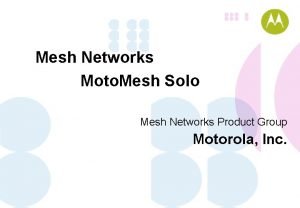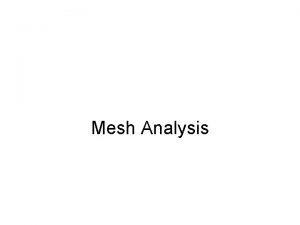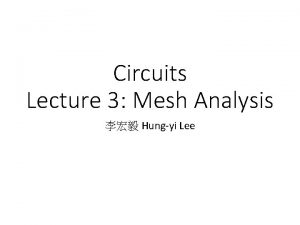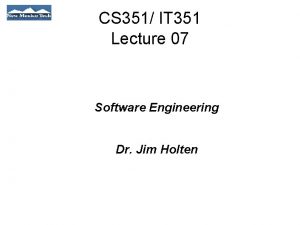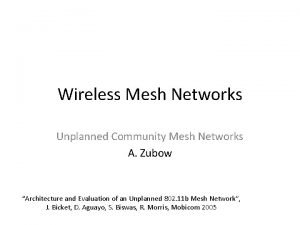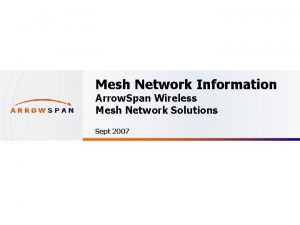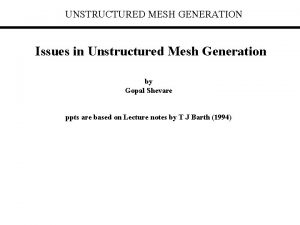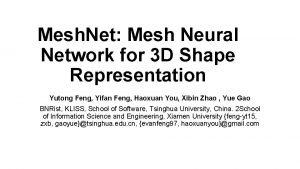CS 351 IT 351 Lecture 08 Mesh Models



















- Slides: 19

CS 351/ IT 351 Lecture 08 Mesh Models Dr. Jim Holten

Mesh Models Background – Representing the real world Mesh Types Model Implementation via Matrices Model Implementation via SRF

Background How do we represent a continuum? How do we represent a deformable object? How do we represent disjoint parts?

Representing a Continuum Field equations (analytical) Mesh points (discrete locations) Mesh “cells” (discrete objects) Combinations

Continuum Field Equations Gravitation Electric charges Magnetic Evenly fields propagated point source radiated energy

Continuum Mesh Points Attributed Fixed values at each point grid points Mobile grid points Arbitrary (strategically placed) points Multi-mesh points

Continuum Mesh Cells Attribute Point values over regions location references Represent May a line, surface, or volume form a hierarchy of cell types Node (Point) Edge (Line between points) Face (Surface bounded by lines) Zone (Volume bounded by surfaces)

Continuum Mesh Combinations Objects, particles, and fields Radiation transport and collisions Protein models Satellite orbits Integrated systems Boundary transports

Mesh Cell Types Finite elements – predefined shapes Regular polyhedral meshes General polyhedral meshes

Mesh Cell Behavior Types Fixed positions (Eulerian Mesh) Adaptive positions (Lagrangian Mesh) Crushing collision surface Wavefront deformation Adaptive refinement for finer localized representation Assemblies of parts Separate “independent objects” Boundaries

Matrix Mesh Models Vectors Matrices How about nonlinear functions? Partitioning?

Matrix Mesh Models Vectors of cell type attributes Point coordinates Attribute values for cells or points Surface flows Volume temperature, material makeup, mass, . . .

Matrix Mesh Models Matrices of cell type associations Matrices of adjacency associations Matrices of mesh cell interactions properties Matrices for linear model propagations

Matrix Mesh Models Most model matrices are sparse Matrix math does NOT handle nonlinearities well, so they must be handled as separate expressions for each transformation. Matrix representations do NOT clearly indicate organization at higher levels of abstraction. It is easy to get lost in the code and data relationships at all levels.

Matrix Mesh Models Most model matrices are sparse Matrix math does NOT handle nonlinearities well, so they must be handled as separate expressions for each transformation. Matrix representations do NOT clearly indicate organization at higher levels of abstraction. It is easy to get lost in the code and data relationships at all levels.

Partitioning Matrix Mesh Models Follow a matrix index axis Each axis has a “divisor” and xd * yd is the number of partitions. All vectors need subdivided into “local” data “shared” data

Sets, Relations, and Fields Indexed sets of elements N elements References by index Indexed mappings between sets similar to sparse matrices “Fields” of attributes over set members

Wide Application Particle cloud models Object collections Mesh models, including cell hierarchies Commonality of representation allows generalization of operators and I/O Standardized higher level structure representation allows easier understanding “Field algebras” are possible.

Sets, Relations, and Fields Partitioning is just relational operations on sets. Arbitrary numbers of partitions are possible Enables dynamic partitioning (on-the-fly as needed)
 Sliding mesh vs constant mesh
Sliding mesh vs constant mesh 01:640:244 lecture notes - lecture 15: plat, idah, farad
01:640:244 lecture notes - lecture 15: plat, idah, farad What is the difference between modals and semi modals
What is the difference between modals and semi modals Ceng351
Ceng351 Iat 351
Iat 351 Mgs 351
Mgs 351 Define the eight stages of the sdlc
Define the eight stages of the sdlc Ensc 351
Ensc 351 Cse 351 lab3
Cse 351 lab3 Mgt 351 nsu course outline
Mgt 351 nsu course outline Mgs 351
Mgs 351 43.351.097/0001-90
43.351.097/0001-90 Mgs 351 ub
Mgs 351 ub Cse 351 lab5
Cse 351 lab5 +39 351 0787268
+39 351 0787268 Mgs 351
Mgs 351 Geology 351
Geology 351 Balcarce 351 lomas de zamora
Balcarce 351 lomas de zamora Vt of diode
Vt of diode Cisco mobility express wlc 違い
Cisco mobility express wlc 違い
